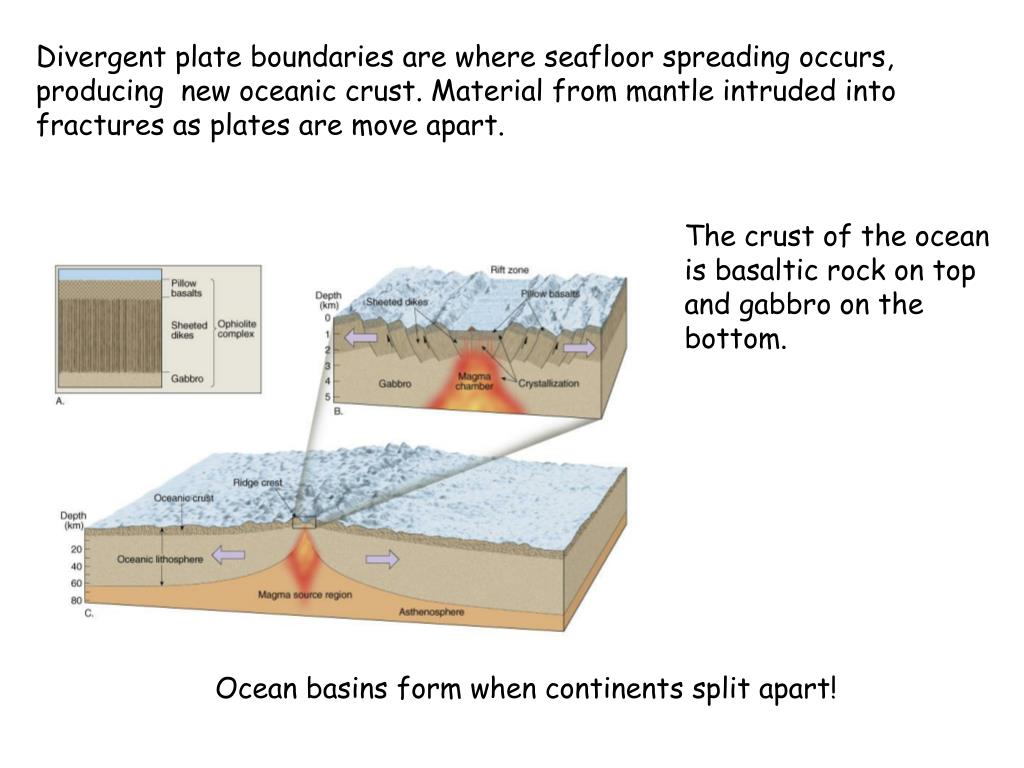
The Mid-Atlantic Ridge which runs down the middle of the Atlantic Ocean, is one such example. Mid-ocean ridges are found along divergent plate boundaries. Rift valleys like the East African rift valley form where tectonic plates diverge.

New crust is formed when the plates move way from each other.Įarthquakes are common near divergent plate boundaries. Two tectonic plates that are moving away from each other is known as divergent. These plate tectonic boundaries are: divergent, convergent, and transform plate. There are three different types of plate tectonic boundaries. More: Continental Drift Theory Types of Plate Tectonic Boundaries The movement of the Earth’s tectonic plates is responsible for the break up of the Earth’s supercontinent Pangea and for the subsequent formation of the Atlantic Ocean as the Americas and Africa shifted. Tectonic plates can move in different directions and at different rates of speed. Tectonic plates are constantly in motion. Map showing the location of major and minor tectonic plates on Earth. This global map created by the USGS shows all the major and some of the minor tectonic plates. Not all minor tectonic plates are shown on large scale tectonic plate maps. Map of the Earth’s Major and Minor Tectonic Plates The Bismark, Mariana, Easter, and Juan Fernandez are examples of microplates. Microplates are tectonic plates that are smaller than one million square kilometers. The Indian, Nazca, and Juan de Fuca plates are examples of minor tectonic plates. Minor tectonic plates are plates that are less than 20 million square kilometers in area but are larger than one million square kilometers. What are the Earth’s Minor Plates and Microplates? Major tectonic plates tend to be at least 20 million square kilometers in size. Plate tectonics is the study of how the plates’ movement and behavior shapes the landform of the Earth. Volcanic and earthquake activity tends to be more concentrated at the margins of these plates. Continental crust, which granitic, is more buoyant than oceanic crust. Oceanic crust, which is basaltic, is thinner than continental crust. The Pacific Plate, however, is made up of mostly oceanic crust. Most tectonic plates are composed of both oceanic and continental crust. This lithosphere is divided into tectonic plates. The Earth’s crust and the upper part of the mantle form the lithosphere. These tectonic plates can range in size from hundreds of kilometers wide to thousands of kilometers across. The San Andreas Fault is one of the best examples of lateral plate motion.In the Earth’s lithosphere, gigantic and irregularly-shaped rocks, known as tectonic plates cover the surface (crust and mantle). When two tectonic plates slide past each other, the place where they meet is a transform or lateral fault. This can lead to the formation of huge, high mountain ranges such as the Himalayas. Since neither plate is stronger than the other, they crumple and are pushed up. About 80% of earthquakes occur where plates are pushed together, called convergent boundaries.Īnother form of convergent boundary is a collision where two continental plates meet head-on. Sometimes the molten rock rises to the surface, through the continent, forming a line of volcanoes. The rocks pulled down under the continent begin to melt. Subduction causes deep ocean trenches to form, such as the one along the west coast of South America. When a continental plate meets an oceanic plate, the thinner, denser, and more flexible oceanic plate sinks beneath the thicker, more rigid continental plate. The Great Rift Valley in Africa, the Red Sea and the Gulf of Aden all formed as a result of divergent plate motion.Ĭonvergent (Colliding): This occurs when plates move towards each other and collide. The earthquakes that occur along these zones, called spreading centers, are relatively small. Molten rock from the mantle erupts along the opening, forming new crust. The three main types of plate movements include:ĭivergent (Spreading):This is where two plates move away from each other. The movements of the plates help shape the geological features of our planet.

Other plates include continents, and some plates include both continents and ocean. Some of the plates have ocean water above them. When the plates finally give and slip due to the increased pressure, energy is released as seismic waves, causing the ground to shake. Most seismic activity occurs at three types of plate boundaries-divergent, convergent, and transform.Īs the plates move past each other, they sometimes get caught and pressure builds up. Movement in narrow zones along plate boundaries causes most earthquakes.


 0 kommentar(er)
0 kommentar(er)
